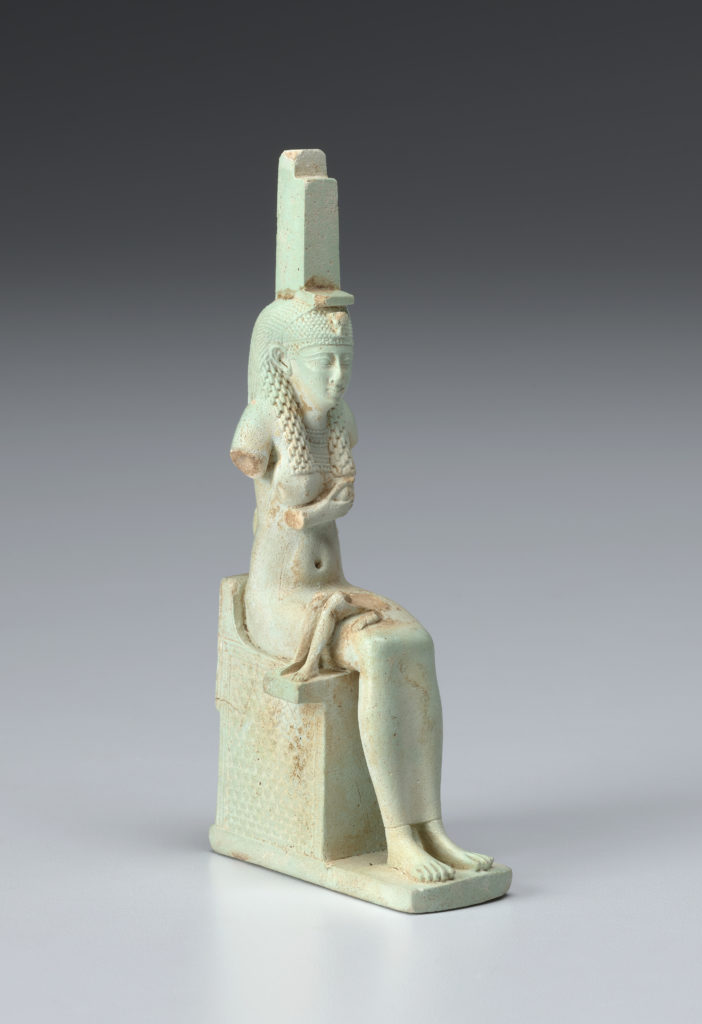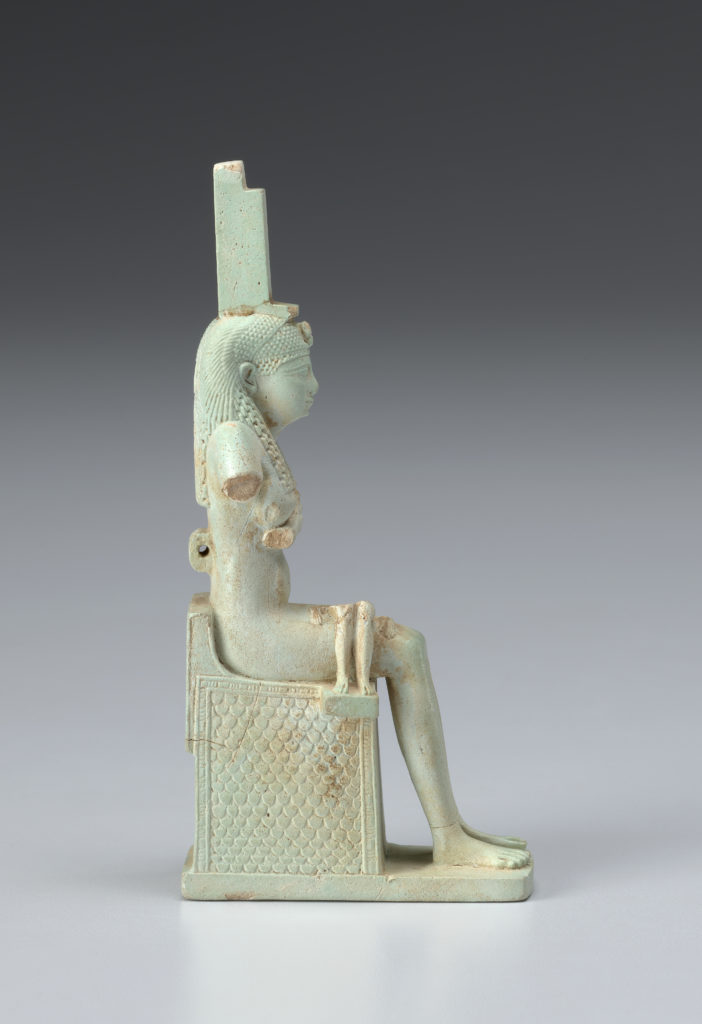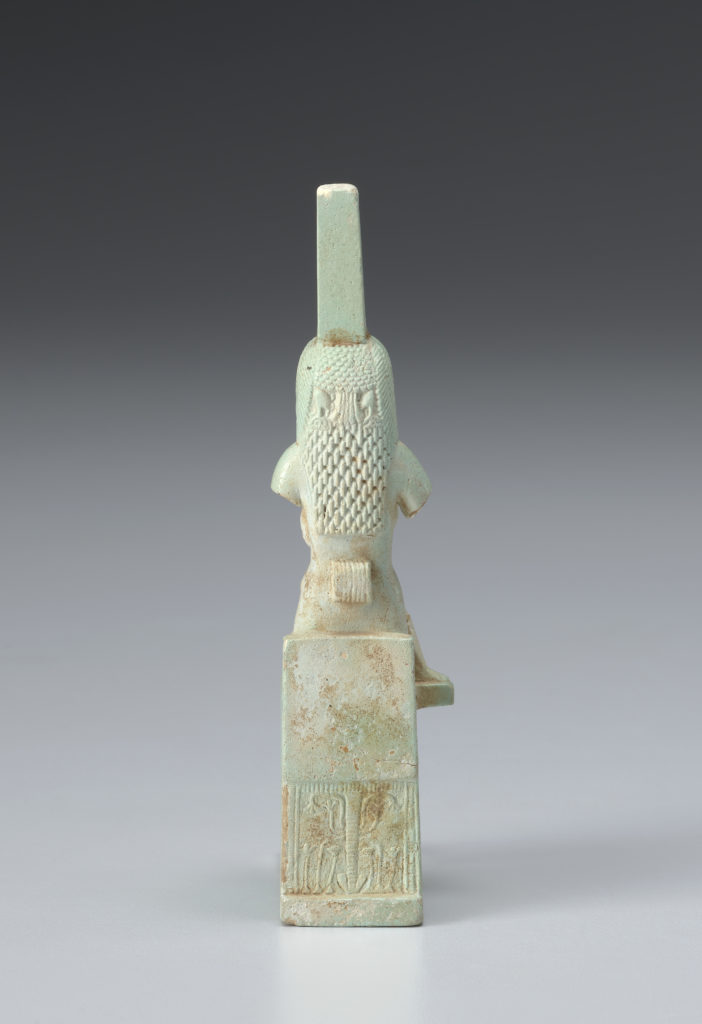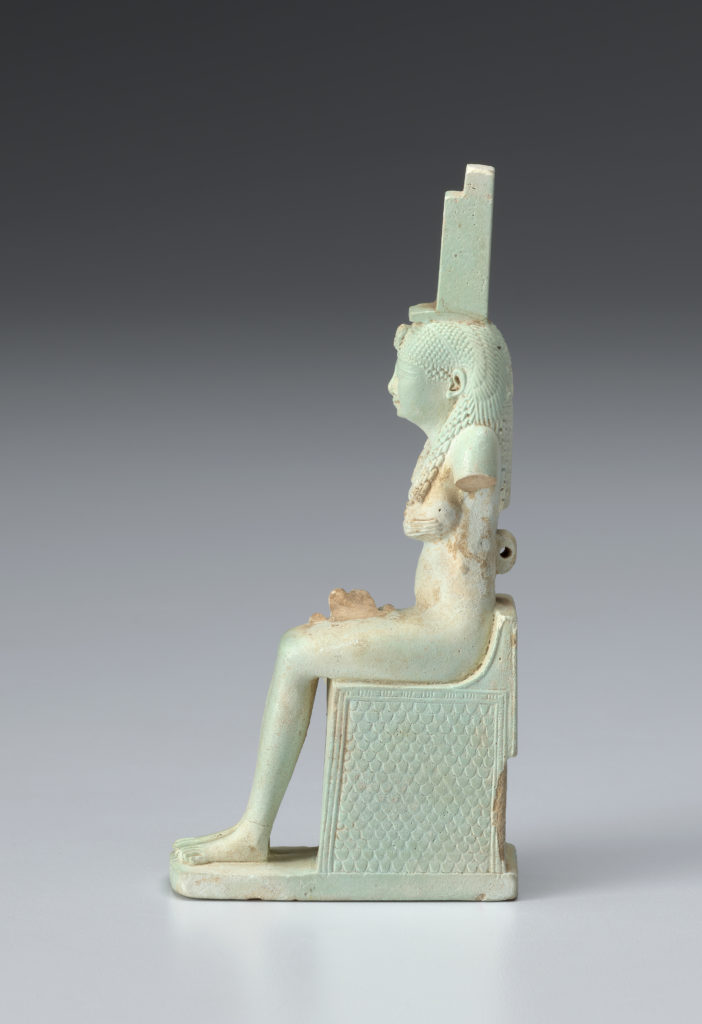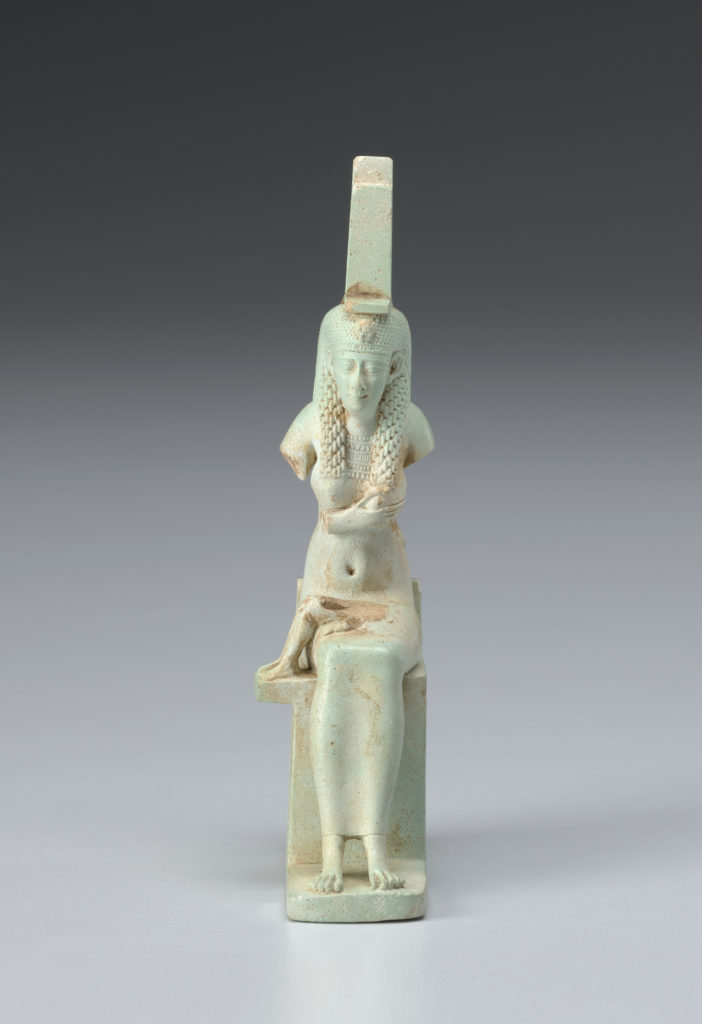Amulet of Isis and Horus (work of art)
Artwork Info
About
Key Ideas
- This six-inch-tall sculpture is made of Egyptian faience (pronounced fay-ahns), a non-clay ceramic made from quartz and glazes. Faience was used to produce a green or blue color similar to semiprecious stones such as turquoise or lapis lazuli.
- The sculpture depicts Isis, the goddess of fertility and motherhood. She is seated in a nursing pose with her son, the sky god Horus. Several parts of the sculpture are damaged due to the fragile nature of the thinner parts of the amulet. The lower parts of Isis’s arms are missing, and the only parts of young Horus that remain intact are his legs and one hand on Isis’s lap.
- Isis wears a vulture headdress to symbolize motherhood. It is topped by a shape that represents the hieroglyphic symbol for “throne,” which is also the hieroglyph of her name.
- In Egyptian art Horus is also represented as a falcon.
Learn More
The motif of Isis nursing her son Horus was popular in the art of the later periods of Egyptian history (during and after 664 BCE). This motif was reproduced in various media, including bronze and faience.
As the mother of Horus, Isis wears the vulture headdress that symbolizes motherhood. It is identified by the vulture’s head on the brow, the wings tucked behind the ears, and the talons and tail at the back of the head. On top of the vulture crown, she wears the hieroglyphic symbol for a throne. This throne, similar to the exquisitely carved one upon which she sits, is also the hieroglyph of her name, Isis (which means “throne” or “seat”). Very little remains of the child Horus; only his legs and one small hand on Isis’s lap are still intact.
Additional Resources
Resources for Teachers
- Visit a web page to learn about the divine family of Isis and Horus.
- Read an article about Horus as a falcon.
Resources for Students
- View another sculpture of Isis and Horus.
- Watch a video tutorial on how to draw Horus the falcon.
- Watch a video of a similar sculpture.

